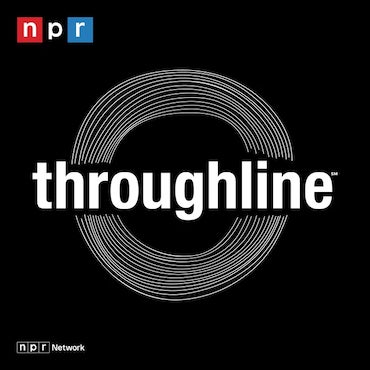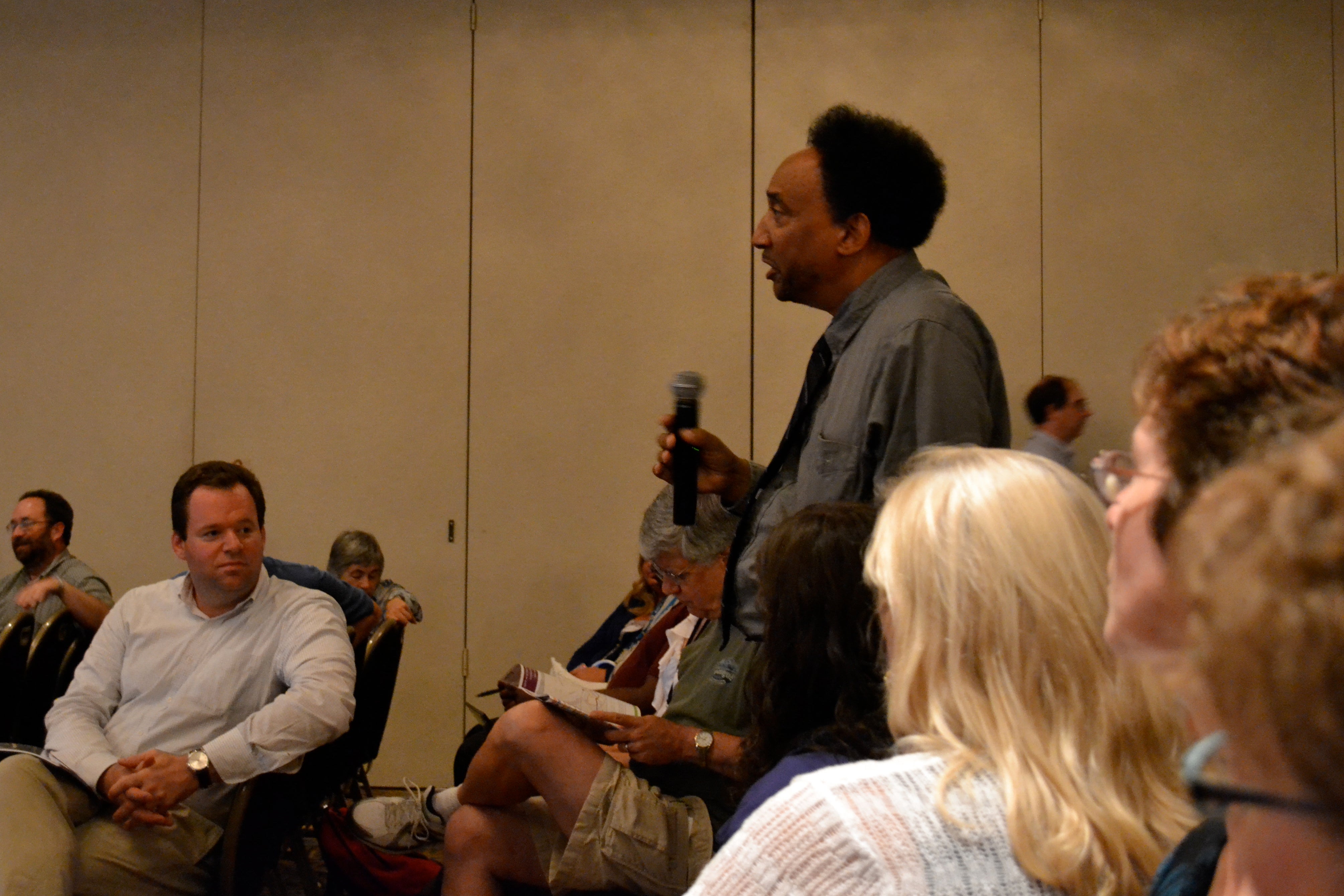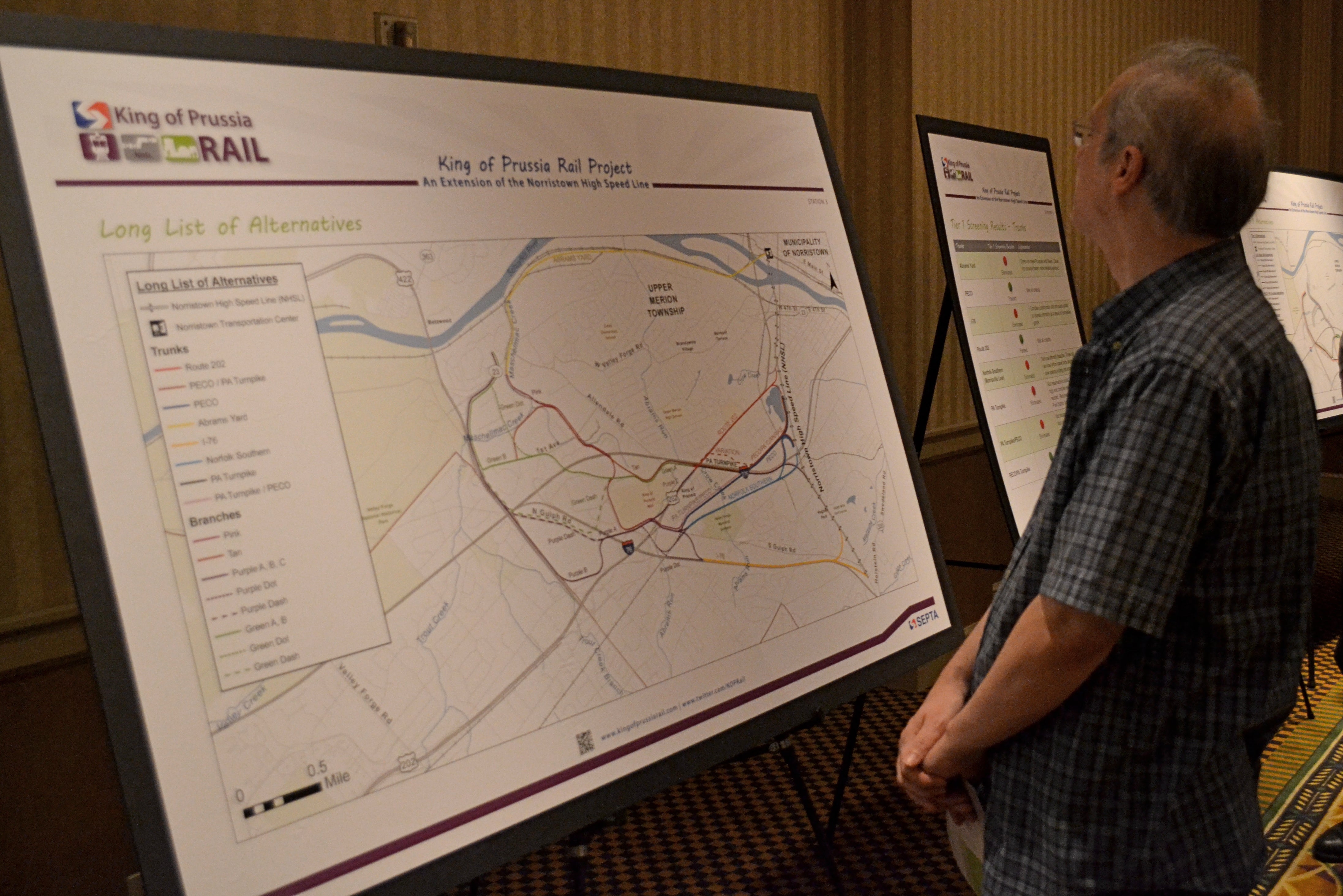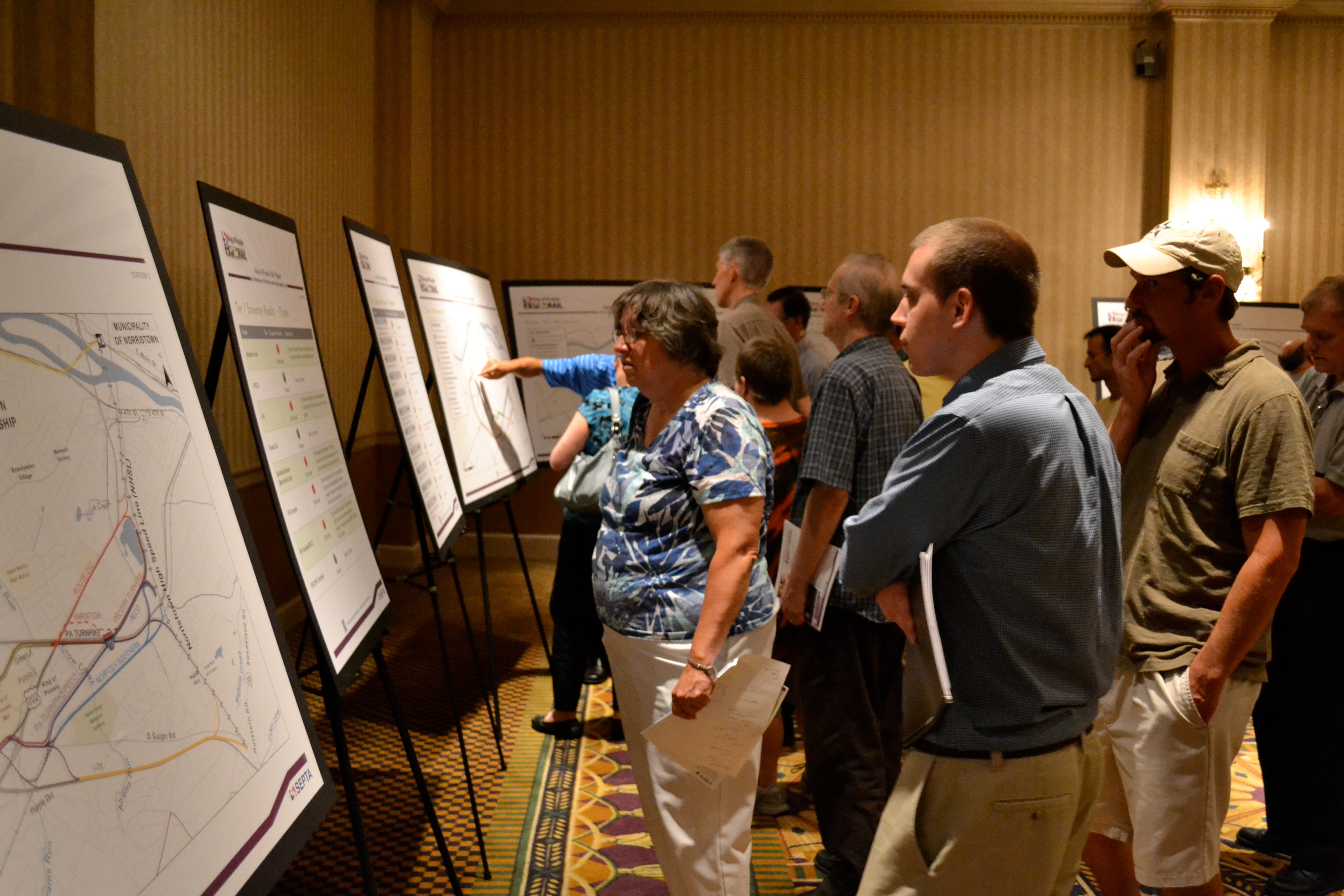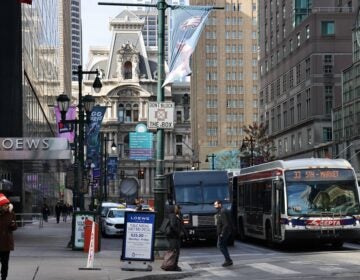King of Prussia rail project will take one of 12 directions
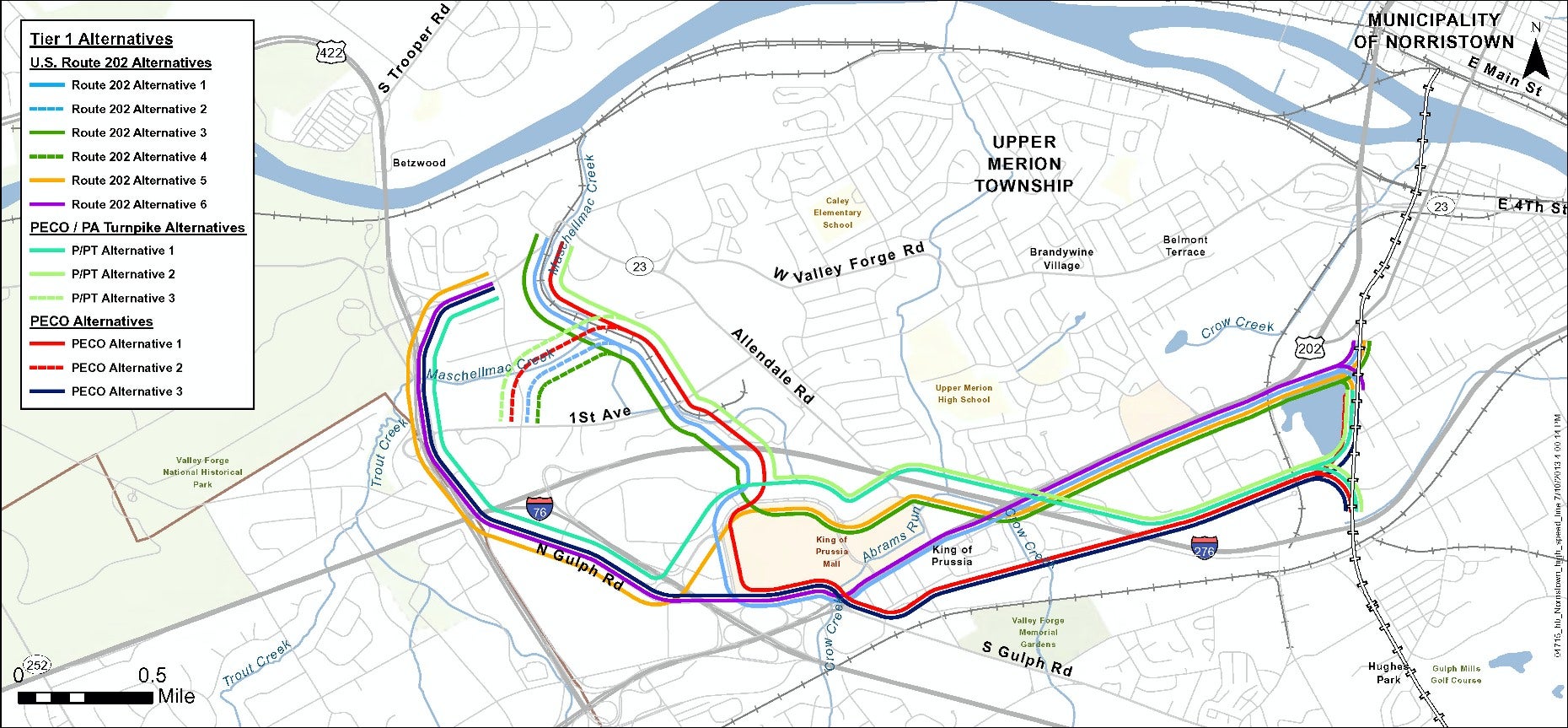
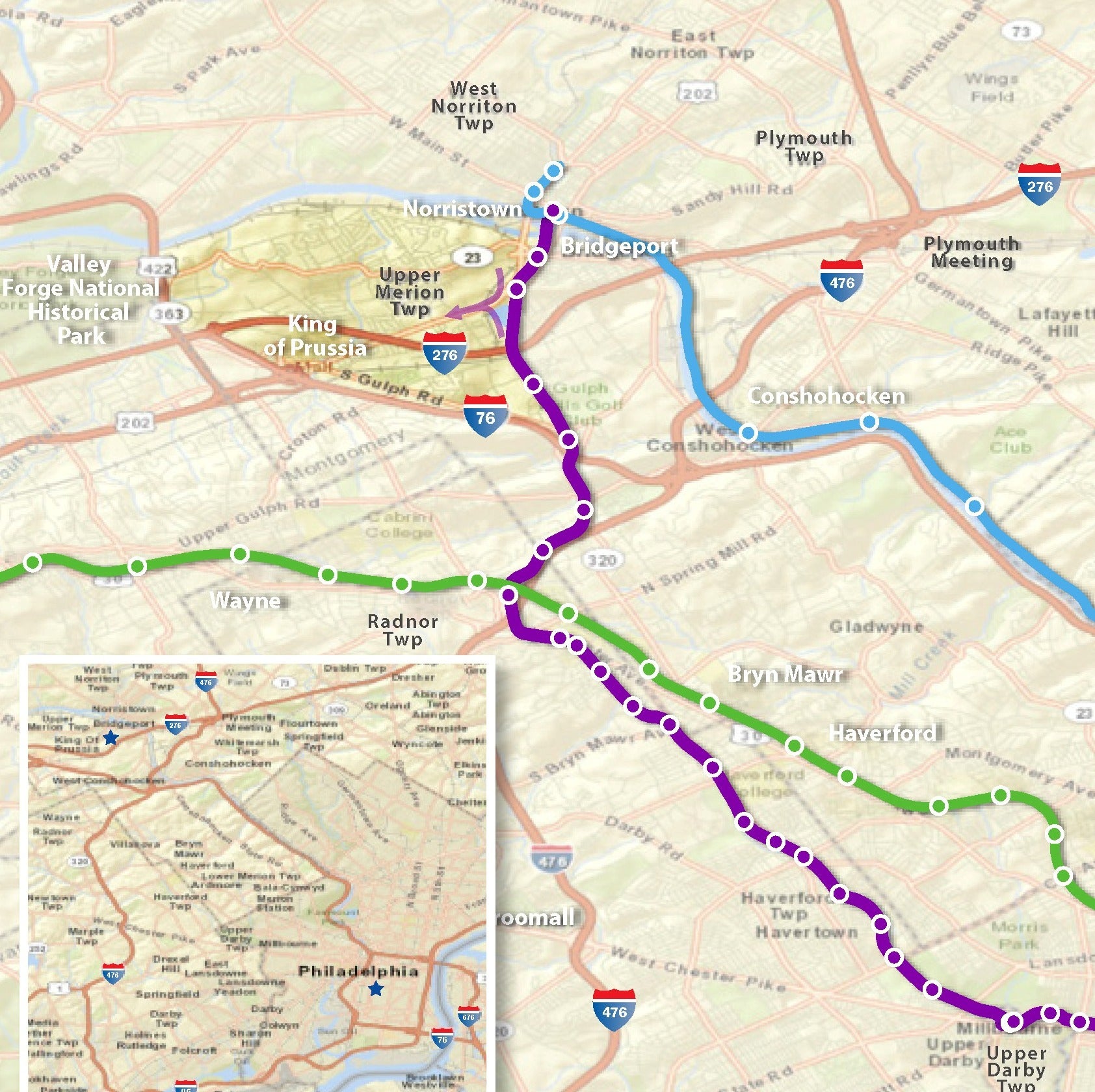
SEPTA’s next big idea – the King of Prussia Rail Line – is moving forward. This week the Authority hosted a public scoping meeting to provide an update and solicit feedback.
In November 2012, SEPTA decided to plan and eventually build a King of Prussia rail extension that would branch off from the Norristown High Speed Line (NHSL) and connect to the King of Prussia region, which includes, among other attractions, the King of Prussia Mall and business district. Such a line, SEPTA hopes, will provide faster, more reliable transportation and increased capacity, reduce roadway congestion and connect to jobs and attractions in the King of Prussia region.
The process of simply planning an extension like this is a long one though, and SEPTA is upfront about that.
“We are many years away from engineering and design,” said Byron Comati, SEPTA’s director of strategic planning and analysis.
He stressed that this is a long-term project and said, “If you don’t plan, you never build, so the planning process has to start somewhere.”
The projected timeline allocates roughly three years for the environmental impact statement (EIS), another three years for engineering and design and three to four years for construction – a nine to 10 year total if all goes well.
Selecting a preferred route
SEPTA’s plans thus far include 12 potential routes that have been whittled down from the initial list of 30. Each route is made up of a “trunk,” which determines where the rail will connect with the NHSL, and a “branch,” which determines how the rail will travel through King of Prussia.
“You may see a branch being used more than once, and that’s the nature of trees,” said Project Manager Sheldon Fialkoff.
The 12 route options are based around three trunks: a Route 202 trunk, a PECO trunk and a PECO/Pennsylvania Turnpike trunk.
The Route 202 trunk would break off of the NHSL and travel as an elevated rail line along Route 202. From there six branch options would carry the line through the King of Prussia region.
The PECO trunk would make use of a PECO right of way and cross the Pennsylvania Turnpike near the King of Prussia Mall before branching off on one of three unique routes.
The third trunk option, the PECO/Pennsylvania Turnpike alternative would use a portion of the PECO right of way but then follow the Pennsylvania Turnpike before turning onto one of three potential branches.
“These 12 alternatives are presented tonight and, again, subject to what we hear tonight,” Fialkoff said at the public scoping meeting.
Public comment
Most of the people who spoke at Tuesday’s meeting said they support the project. The audience seemed more positive, or at least less vocal, about the project than the audience at the initial public meetings in January.
Of the concerns raised, one was cost.
“I agree that there is a huge demand for this, but I think the issue … is, is it worth the cost?” said Ben Anderson, a Phoenixville, Pa. resident.
“This process itself must be costing something and that’s not being disclosed here today,” Anderson said. “If SEPTA is so desperately underfunded, how are we paying for the consulting process itself?”
Anderson brought up another major concern: what would an elevated rail line along the Route 202 actually look like? He said he cannot imagine how such a line would be feasible given the lack of space in and around Route 202. Anderson suggested SEPTA develop models as the process moves forward.
“The idea of running an ‘el’ down 202, to me, which is a few blocks from my house, isn’t appealing at all,” said Deborah McGill, who lives near the Route 202 trunk and the proposed Henderson Road branch.
McGill said when she spoke with neighbors, none of them knew about the project.
“I think it would be a really hard sell for the people that live really close to this section,” she said.
Even those who said they strongly support the idea had suggestions, like building with future expansion in mind. Maybe in 30 years there could be a Lansdale, Pa. to King of Prussia line, said Douglas Diehl, a transportation advocate. Another supporter noted that no matter which route is selected, somebody is going to be left out.
“We have to do this project,” said Mike Santillo, a King of Prussia resident. “There’s no alternative. We only have so much land, and we can’t keep building roads. I don’t know what the solution is, but I think this is a good beginning.”
Where to go from here
SEPTA will take additional public comment until August 14. Comments may be submitted via email at info@kingofprussiarail.com or on the King of Prussia Rail website.
Next, project leaders will identify stations along each of the 12 route options, determine ridership projections for each station and look at the comparative costs of each trunk and branch combination. Then they will make a final evaluation of shortlisted route alternatives and take cost, feasibility, refined ridership forecasts, and impacts and benefits into consideration.
As mentioned above, the full project could take between nine and 10 years.
WHYY is your source for fact-based, in-depth journalism and information. As a nonprofit organization, we rely on financial support from readers like you. Please give today.
